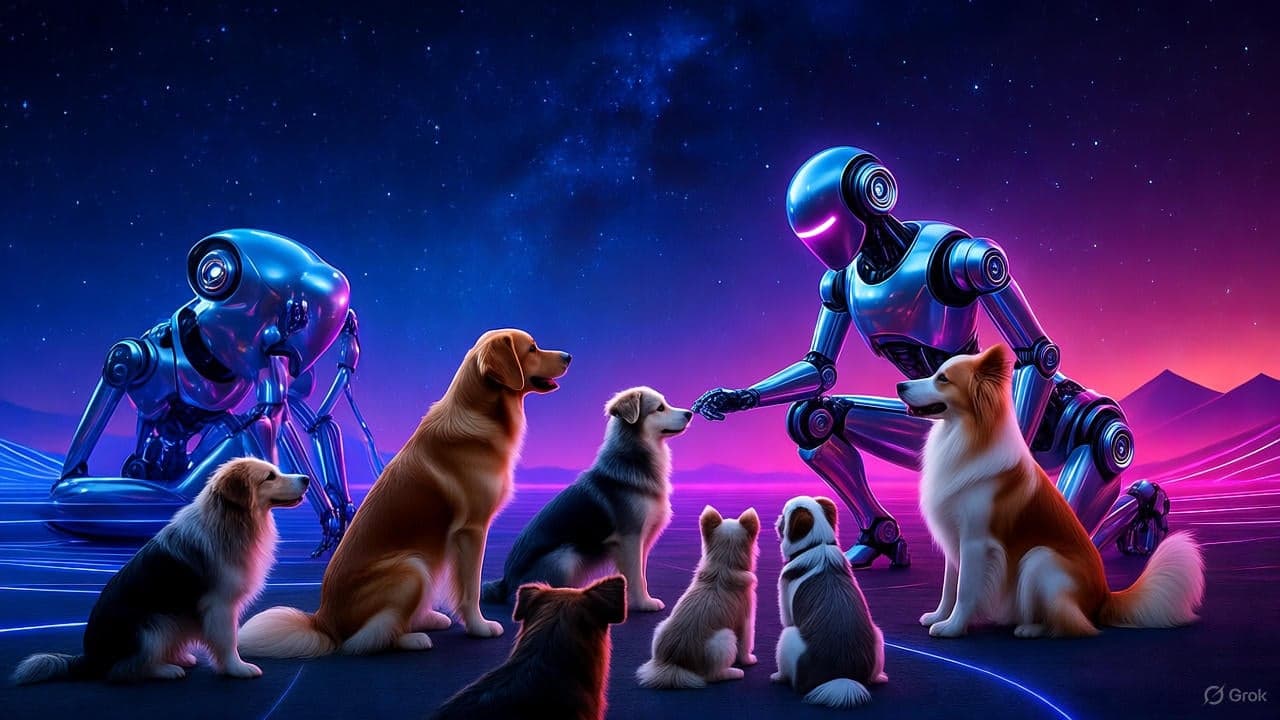From Puppy Pills to Job Loss: How Generative AI Ads Reshape Trust and Talent
TL;DR
AI video tools have collapsed ad production costs from $500K to $500 — making it possible to spin up convincing (and sometimes absurd) campaigns like a fake puppy medicine commercial. The upside is hyper-personalization and speed. The downside? Erosion of trust, manipulation risks, and disruption for creative talent. The winners in this new frontier will be the brands and creators who know how to pair AI automation with authentic storytelling and ethical guardrails.

A creator who goes by PJ Ace shared a fake pharma ad called “Puppramin”. It looks exactly like the kind of glossy spot you’d expect to see during a Sunday night football game. The difference? It was built almost entirely with AI tools, cost about $500 in credits, and was pushed out to the world through YouTube and Reddit.
👉 Watch the ad on YouTube (with prompts in the description)
👉 Read the original Reddit thread
👉 See X post
What started as a joke about “puppy medicine” has become something bigger. It shows how far generative video has come, how cheap it’s getting, and how advertising could shift in ways that feel both exciting and unnerving.
When an ad knows your name
Right now we are still impressed, or amused, that AI can generate actors, lighting, and voiceovers that look and sound believable. The next step is personalization at scale.
Imagine an ad for a sneaker that says your name, shows your city skyline, and calls out your last purchase. For marketers, the performance upside is obvious. For consumers, the creep factor is just as obvious.
The challenge for brands will be knowing where to draw the line. Transparency, consent, and disclosure will matter more than ever. If the Puppramin ad made you laugh, what happens when it drops your dog’s name into the script?
Jobs on the line or simply changing
In the Reddit discussion, one comment stood out: “It’s over for many in advertising.” That is a fair reaction when you see a $500 ad that could have once cost $500,000. But it is not the whole story.
Some roles are clearly at risk. Storyboard artists, junior editors, and large on-set crews are less essential when a single person can generate convincing video. Others will shift into new territory. Copywriters can become narrative engineers. Editors may spend more time curating iterations rather than stitching together raw footage.
New roles will also appear. Creative directors can act as showrunners who guide AI tools without losing brand voice. Privacy and compliance leaders will handle consent and watermarking. Strategists will make sure AI-driven ads do not cross ethical or regulatory lines.
The skills that matter tomorrow will not be about holding a camera. They will be about storytelling, taste, and the ability to direct a machine without losing the human touch.
The cost collapse
The Puppramin case is an easy metaphor. What once required a six-figure budget and a large team can now be spun up in a week by one person on a laptop. For brands, that means testing ideas faster, launching more variants, and filling social feeds with content that looks professional.
But production value no longer guarantees trust. If a scammer can make a fake ad that looks like a Nike or Pfizer spot, then audiences will have to rely on something else. Transparency, authenticity, and reputation will become the signals people look for when deciding what to believe.
Where we go from here
So are creators obsolete? Not yet. The industry is not collapsing, it is changing shape. The people who thrive will be those who focus on strategy, taste, and ethical oversight while letting AI handle repetitive work.
For brands, the message is clear. Start experimenting. Set rules and guardrails. Learn how to work in a world where “good enough” creative can be generated in minutes.
The Puppramin ad may be a gag, but it is also a preview. Personalized, automated, AI-assisted media is here, and the real question is whether we will use it responsibly.
